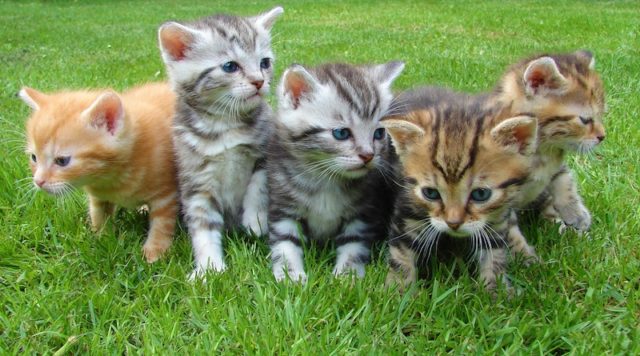Before you read one more article on how to be more productive or maximizing productivity in every second of every day, remember this: Be kind to yourself and your mistakes.
You can’t expect to be more productive overnight.
You’ve probably spent years cultivating your work habits–both good and bad, consciously or subconsciously–and those won’t immediately change.
Small adjustments can lead to more lasting changes, but those may take time and discipline. It looks really easy when you’re reading a productivity article like this to think it’s easy. But it’s not. I’m not writing this from an expert point of view, but from a fellow worker in the fight against distraction.
So be patient and kind through the rough patches and try again.
How To Be More Productive: 18 Top Tips
| Part I: Work & Efficiency [jump to Part I] | Part II: Mind, Body, & Soul [jump to Part II] |
| 1. Make a reasonable to-do list | 10. Identify your personal work patterns |
| 2. Set small goals for the tasks | 11. Figure out your 2 peak hours |
| 3. Focus on one goal at a time | 12. Throw stuff away and declutter |
| 4. Stop multi-tasking | 13. Walk or exercise |
| 5. Find a method for delegating and following-up | 14. Stop |
| 6. Create a proactive dashboard | 15. Be accountable to another person |
| 7. Pick one task and then do it | 16. Ask for help |
| 8. Follow the 2 pizza rule for meetings | 17. Get sunlight |
| 9. Group similar tasks together | 18. Get all warm and cuddly |
How to be More Productive: Part I – Work & Efficiency
1. Make a reasonable to-do list...
…and don’t overwhelm yourself. To-do lists often fail because we make them way too complex or the tasks are unequal. Some tasks will take a long time, others won’t take any time at all. This creates an unbalance in the way we distribute our time. What happens then is that our to-do list then becomes a procrastination tool. Yes, that’s right. Because then we do the easy stuff, and then become really distracted on the hard stuff.
Don’t lie, you’ve done that before. So then you need to manage your to-do list better.
2. Set small goals for the tasks.
With every new project or assignment, the scope may seem too large. But once you start breaking it down and realizing what can be accomplished, you’ll notice how each part builds upon the other.
One of the easiest and most practical things you can do is to break down your project into smaller goals.
- What are the pieces and assets needed?
- Who do you need to talk to first?
Break up key pieces of information before setting timelines, and then estimate how long they’ll take you to accomplish.
Understanding the scope of what’s being asked, putting the steps in place, and then estimating the time needed will help you get a grasp of what’s being asked. Sometimes what seems like a big project won’t take much time at all, or vice versa.
Project management software can help you stay on task and complete your goals. To find your perfect software, check out our list of the top Monday.com Alternatives.
3. Focus on one goal at a time.
We just talked about how you should get in the habit of setting small goals for tasks. Now we move on to focusing on one at a time. Hopefully outlining your project ahead of time in the section before lets you know which tasks are most important, but how does your organization determine what’s important? Ultimately its for your team to decide, but you can track OKRs, KPIs, and other metrics to indicate productivity.
Whatever your company’s priority is, it’s your job to execute. Try the 90-90-1 rule. It also works if you’re managing a team.
Here’s what you do: Commit the first 90 minutes of your day for 90 days to the most important task. Suggested by HR guru, Robin Sharma, it will focus your priorities before the day even really gets going.
It’s also very practical. It’s not spending all of your time every day on one single thing.
You can also set up projects to focus on this one goal and to make sure that it aligns with your overall company goals.
4. Stop multi-tasking.
While we’re on the topic of focusing on one task or goal at a time, let’s talk about multitasking. Its easy to get distracted and try to work on multiple tasks, but the reality is, it makes you LESS productive.
The constant task switching is making us more tired and reducing productivity. It’s taking up brain energy to switch and change that often. We aren’t being more productive, we’re skimming over the surface of things. The modern workplace environment won’t support you in your quest to be more focused–it’s virtually an impossible task when Slack, Skype and Salesforce are jockeying for our attention.
Here’s a quote from a more credentialed person than me. A neuroscience behavior professor Daniel Levitin at McGill says:
“That switching comes with a biological cost that ends up making us feel tired much more quickly than if we sustain attention on one thing.” And you know what else? Caffeine won’t necessarily help us. In fact, we probably just need to take a break for awhile instead…People eat more, they take more caffeine. Often what you really need in that moment isn’t caffeine, but just a break. If you aren’t taking regular breaks every couple of hours, your brain won’t benefit from that extra cup of coffee.”
Ouch. Don’t tell my favorite barista.
To really stop multi-tasking, you may need apps to block you from clicking over. This will keep the distractions at bay, especially for us constant consumers.
5. Find a method for delegating and following up.
It’s one thing to give your team tasks and projects; it’s another thing to make sure they finish the work and get it done. Then passing it off for approvals is another piece of the pie that you have to tackle.
Finding a reliable method for tracking your team’s projects will make your work more efficient. Collaboration tools and project management software like Workzone can definitely help with this, but you also have to commit to using tools like this so you don’t let down your fellow co-workers. But your individual part is important in this, too. The more you update and follow up with next steps, it’ll help your co-workers stay on track, too.
6. Create a proactive dashboard.
This idea is from Noah Kagan, the founder of AppSumo. Essentially, this is a measurable task list. If you’re noticing that a certain task is having a big effect on our business or is a necessary task that you need to keep doing, then list out the number of times that you need to do that task each week. The goal here is to record inputs, not just outcomes.
This is especially useful for marketers. If you know you need to tweet or write a certain number of LinkedIn posts, then you can list these out and make sure you do that number for the week. Here’s an example of my proactive dashboard:

Watch this video from Noah Kagan to grab your own proactive dashboard template.
Another way to use a proactive dashboard is using your team’s project management software during team meetings to track progress on projects. There are plenty of alternatives out there including Gantt Chart software.
7. Pick one task and then do it.
This is very difficult because sometimes our projects aren’t a 30-minute or one-hour job. It may take 8 hours or multiple days. What’s the answer then? Break it up into one task and then do that one task to its completion. But how long should that be? And what’s reasonable? I think most of our days are broken into hour segments. Which then is really 45 to 50 minutes. We have meetings that start on the hour, take a lunch hour, or schedule a call for an hour. Working consistently for 45 minutes on one thing makes sense, but is very difficult.
The Pomodoro technique suggests 25-minute blocks of time, with short 5 minute breaks, followed by longer breaks later on.
Pomodoro helps you eliminate interruptions and helps you estimate how long a certain task will take you. Read more about the Pomodoro technique in this article.
8. Follow the 2 pizza rule for meetings.

Meetings definitely can slow down momentum, especially when there’s a huge crowd of 30 people to “brainstorm.” We know how that goes. The same people who always talk will talk. The silent ones will stay silent.
If you have to order more than 2 pizzas to feed the team you’re meeting with, then it’s too big. There will not be enough discussion. Not enough ideas will be expressed. Instead, if you have a team made up of only people who would eat two pizzas, more vibrant ideas will emerge. More people do not necessarily equal better ideas or faster action. It slows things down considerably.
People are less interested and feel less personally responsible if the idea stalls and stagnates. The accountability is lost.
9. Group similar tasks together.
When we switch between tasks, we naturally create friction. Starting and stopping. Opening and closing. Beginning and ending. All of those small moments add up and break our concentration. Then we get distracted and forget why we even were reviewing something in the first place. But the way to cut down on switching between tasks is to group similar ones together. Don’t respond to just one email and then move on. Respond to all of them and then don’t come back until several hours later. Or batch all of your emails together.
How to be More Productive: Part II – Mind, Body, & Soul
10. Identify your personal work patterns.
Tracking your time, even if no one is asking you for it can help you understand your work habits and the time of day when you finish work most successfully. This might actually hold the key to how to be more productive because learning from your patterns will allow you to focus on where you are (and aren’t) most productive.
Tracking your time efficiently, knowing what your tech habits are, from when you check your email to how often you check your favorite websites or social media can affect your workday in a big way. Check out browser extensions like Freedom that limit time on social sites or non-work sites. This takes discipline!!
By re-arranging some of those things, you may be able to get more done. Tracking your time for a week or two will help you see where you spend your time, and will help you better estimate your goals from #1 a little bit better the next time around. The next time you’re asked to repeat a task, you’ll have a better sense of the amount of time needed.
You’ll also notice problem areas, where you tend to be less productive or identify certain scheduling quirks that you can work around–such as weekly meetings or appointments or even when that one coworker comes by to chat for a few minutes.
One method that may help is a bullet journal. This is my favorite breakdown of how to make that happen, complete with symbols!
11. Figure out your 2 peak hours.
Some of us are morning people, some of us are night owls. With the modern business environment changing, there may be ways to accommodate your natural energy more than ever.
Maybe “the office” doesn’t open until 9 am, but your peak creative energy is from 5 am to 7 am. Personally, I find myself most productive when most people are winding down their day, around 4 pm to 7 pm and then after 8 pm. Often, I’ll purposely take some of that time away or schedule more less-strategic tasks during hours when I’m not as engaged. It’s suggested that we should find at least 2 hours a day to dive into the harder strategic work and leave the other hours for meetings or less urgent tasks.
You’ll also identify patterns and when you could engage in “deep work” or the idea of focused work for longer periods of time. This is a productivity concept from Georgetown professor Cal Newport. Some work (like answering emails) is shallow, while others (like coming up with new campaign concepts or intense photo editing) may need more focused time or “deep work.”
12. Throw stuff away and declutter.
Did you know your physical environment impacts your work and productivity? And I don’t mean just if you work in a “cool” office or not. Depending on your company and your role in the company, that’s largely out of your control. But you can control your workspace.
It helps you be more productive when you don’t have to hunt and peck for whatever that missing thing is. You’ll save time by not doing that. You’ll also get more clarity and focus for your tasks at hand. Check out more tips here.
13. Find time to walk or exercise.
I’ve worked in office parks, in downtown business districts, and from home. And in every place, I try to find time to walk at least once a day. That could be around the parking lot, down the street, or in the park, and it’s more refreshing than anything on social media.
This isn’t about staying in shape or losing weight, not that those are bad things. But exercise can help you be more productive because it increases your alertness. Because it increases your blood flow and cardiovascular health, you’ll be less anxious, more focused, and more capable of dealing with stress.
14. Stop…
…and reflect. When you’re responsible for getting multiple projects out the door, you have to take a step back and see what’s working, what’s not, what needs to be prioritized, and what needs to be changed. Building in time to review isn’t wasting time but optimizes your work moving forward. For more on post-project reflection, check out this post.
15. Be accountable to another person.
For those that work in teams, this seems obvious. Using an automated project management system will notify you of the next task when it’s finished. But you may need accountability on everyday tasks too. Like if you accomplished the goals in your proactive dashboard (see #…), or spent another time on strategic brainstorming or setting up campaigns.
Find someone you trust that will support you and not beat you up for your failure. You need an encourager. This could be your supervisor, but more than likely it’s a colleague that can help you stay on track. And maybe you can help them as well.
16. Ask for help on stuff you don’t understand.
If you’re prideful (like me!), you don’t like to ask for help on things you feel like you should be able to do. This manifests itself in my life by taking way too long trying to format an Excel sheet or create the perfect Powerpoint presentation. Instead, smart people ask for help. And they’re actually viewed by their colleagues as being smarter.
Not to mention, this could save you tons of time in the long run. Yes, it may be difficult at first to sparse out a few extra minutes here and there to watch a video or call a support line, but in the end, it’ll help you be more efficient with those tasks.
17. Get sunlight.
Now that more workers have shifted to remote environments, this productivity tip is more relevant than ever. According to a study by Cornell University professor Dr. Alan Hedge in 2018 entitled Daylight & The Workplace Study: How natural light improves worker health, wellness and productivity, you will boost your productivity and alertness with more natural light. Why do you think offices with windows are in such high demand? It also affects the timing of the circadian clock which then impacts your wakefulness and fatigue.
“Workers in offices with optimized natural light reported a 51 percent drop in the incidence of eyestrain and a 63 percent drop in the incidence of headaches, both of which can detract
from productivity.”
Daylight & The Workplace Study: How natural light improves worker health, wellness, and productivity.
I used to work in office buildings where I also found myself in the middle of the floor or stuck in a conference room with no window. Plus, where I live it would get dark early in the wintertime, including the last part of the working day. Not good. What could I do? I bought a lightbox to bring an extra glow to my workspace. Try it if you’re in a similar position.
18. Look at cuddly animal pictures
This is kinda crazy and you may not believe it, but sharing and looking at pictures of cute animal pictures actually increases attention spans and productivity. Don’t believe me? This is hardcore science. If you have a problem with this, then you have a problem with science itself (j/k). But for real–a Japanese study measured performance after looking at cute animals. Yes, they actually did this.
Here’s a quote from the study: “Results show that participants performed tasks requiring focused attention more carefully after viewing cute images.”
Can you believe it? Here this will help you:

Conclusion
So, how to be more productive? You’ve read now that there is no sure-fire way to increase productivity. Increasing productivity is highly personalized and possibly not all these tips would work for you or your team. Maybe a combination of identifying your peak hours and increasing accountability would work wonders.
However, one way to get your team more productive is using project management software designed for full adoption through unlimited training and a helping hand of people who care. Reach out to us to get your team on the same page and delivering more projects on time.




